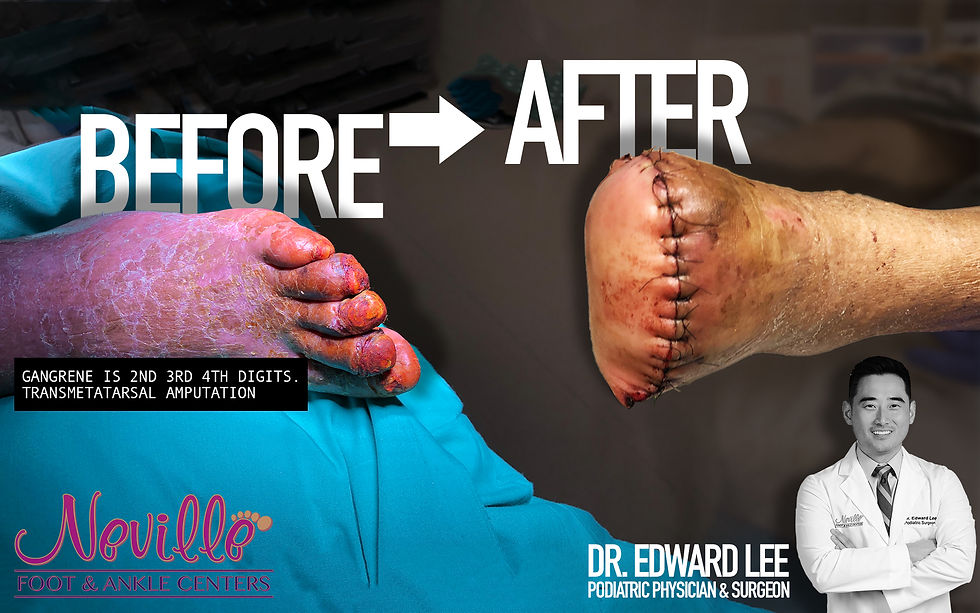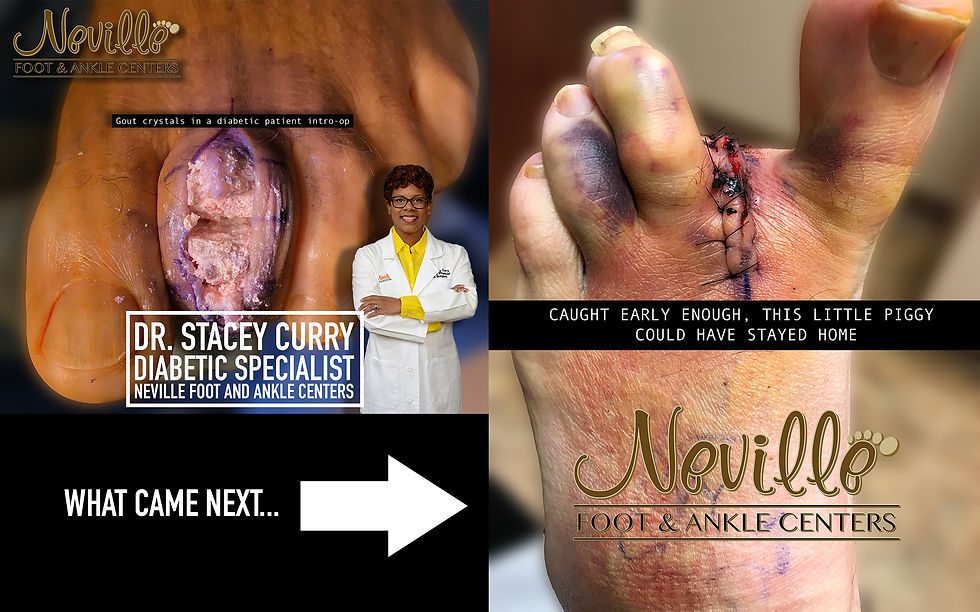
Wounds
Wounds
Foot wounds can lead to infections and can become increasingly difficult to treat treat due to the biomechanical complexities and underlying circumstances that cause the infections. Infections typically follow a traumatic event or tissue loss, bacterial growth, or both. However, the more common presentation is that of a patient whose health is compromised with a metabolic or peripheral vascular defect that complicates optimal successful treatment.
A diabetic foot ulcer is an open sore or wound that occurs in approximately 15 percent of patients with diabetes and is commonly located on the bottom of the foot. Of those who develop a foot ulcer, 6 percent will be hospitalized due to infection or other ulcer-related complication.
Diabetes is the leading cause of non-traumatic lower extremity amputations in the United States, and approximately 14-24 percent of patients with diabetes who develop a foot ulcer will require an amputation. Foot ulceration precedes 85 percent of diabetes-related amputations. Research has shown, however, that development of a foot ulcer is preventable.

Are wounds dangerous?
Patients with open wounds should always get an examination, especially those
with Diabetes. A festering wound may lead to amputation or other internal issues relating to infection.
PAD (Peripheral Arterial Disease) commonly displays first on the foot as an ulcer or become a wound. It is preventable and treatable, but if left unattended can be dangerous, which is why it's the 2nd leading cause of death next to cancer.








.png)
.png)






